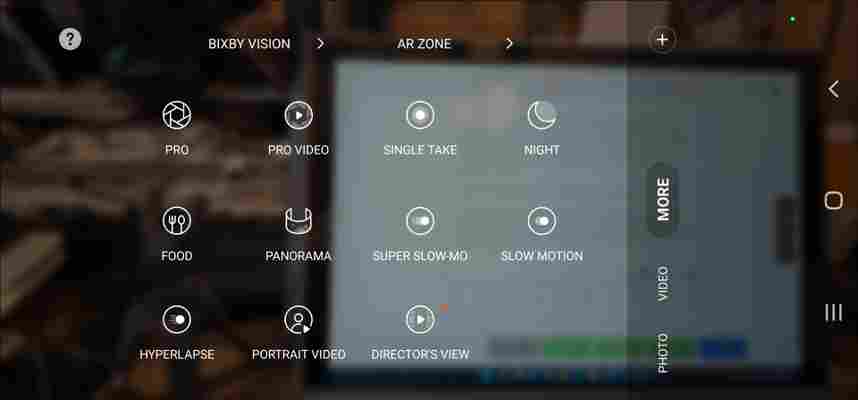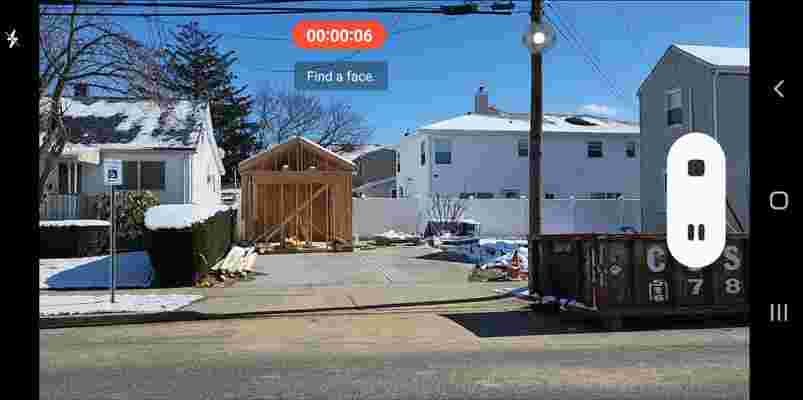Canon responded to claims that it's in the process of discontinuing its EF lenses for DSLRs, telling TechRadar that the lens range is still in its plans – for now.
The speculation started following a tweet from Japanese photographer Kimio Tanaka , picked up by Petapixel , which compared photos of Canon's EF lens lineup in Japan on Jan. 8 and Feb. 10.
According to the comparison, the number of EF prime lenses in Japan dropped from 21 lenses to nine. In fact, the total number of EF lenses on Canon Japan's site, including those for its EOS-M cameras, is 42 lenses, with more than 70 lenses now discontinued.
That's understandable, given that new Canon DSLRs are now a rarity, with the camera giant confirming earlier this year that it has stopped making flagship DSLRs. But the EF lens reports generated some more sweeping headlines that the company is in the process of discontinuing all EF lenses, and Canon says this isn't the case.
A Canon spokesperson told us: "The reports stating that Canon has ended manufacturing of EF lenses are not true. While we are indeed expanding our lineup of RF lenses as the global market shifts toward mirrorless products, we continue to value our customers who use EF lenses."
Part of the reason for this, it seems, is because some photographers see older EF glass as a good-value partner for newer mirrorless EOS R cameras, with Canon keen to stress to us the existence of the EF-EOS R adapter.
Naturally, Canon won't keep making EF lenses indefinitely, and it did suggest that the system is winding down. Canon told us: "As the market continues to shift towards mirrorless products, it is a matter of course that there will be less user demand from customers for some EF lenses. Canon will consider its lineup of lenses according to customer needs.”
The situation varies by region and we asked Canon if the lenses that are currently listed as 'out of stock' on the Canon UK store are discontinued. We'll update this story when we hear back, but the underlying message seems to be that the system will become gradually shrink – talk of total EF lens discontinuation, though, is still a bit premature.
Analysis: The final act for DSLRs and their lenses

It's undeniable that the total number of EF lenses that are available to buy new is declining – that's certainly the case in Japan, as Canon's website shows, and it's a pattern that's likely to continue in other regions. In the US, only 11 prime EF lenses are currently available to buy new, while in the UK that number is 13 lenses.
But Canon takes issue with the conclusion that it's rapidly discontinuing all EF lenses. It still has a large base of DSLR owners to keep happy and, as the company told us, some EF lenses can make good companions for its newer EOS R mirrorless cameras.
Still, despite this diplomatic response, the reality is that Canon's focus and investment are in its RF Mount lenses, and the effects of the pandemic certainly seem to be accelerating the trend towards a mirrorless-only world, for new products at least.
This time last year, Nikon made the surprise decision to discontinue its Nikon D3500 and D5600 DSLRs in Japan , with other regions to follow "based on the needs of the market." More recently, the Nikon D500 DSLR was given the ax in Asia, making it a good time to buy one in other regions.
DSLR cameras and their lenses are certainly in their final act, even if Canon says it's too early to pull the curtain on them just yet.
Samsung Galaxy S22 Ultra's Portrait Video is no match for Apple Cinematic mode
Oh, Samsung Galaxy S22 Ultra, I wanted so much more from your Portrait Video.
The Galaxy S22 Ultra is, in many ways, a powerful Android 12 handset for professionals. It's got that massive screen; a built-in stylus for note-taking, markup, and more; and an incredible camera array with some truly eye-popping specs. What it doesn't have is cinema-quality video, however.
Sure, I can shoot up to 8K video at 24 fps for TVs that almost nobody owns, and gorgeous 4K 60 fps on either the front or back cameras. But what I wanted and hoped for was the kind of easy-to-use film-making chops I now find in Apple's iPhone 13 line.
If you haven't tried or seen Apple's Cinematic mode in action, it's a film-worthy experience. Available on every iPhone 13 model, Cinematic mode is more than just portrait-mode video; It's the ability to focus on any object or person in a scene, while throwing the rest - foreground or background - into soft focus. It creates " Cinematic video " because it gives your video a cinematic look and feel. In the movies, they achieve this effect through the use of "focus pullers," people who change the short-depth-of-field focus from one subject to another by manually adjusting the lens focus. Without this effect, a movie scene would look flat and amateurish.
As we were first preparing our first takes on the Samsung Galaxy S22 line, I asked the company if these phones had similar capabilities. I was told that they all had "Portrait Video." I thought, "Brilliant, can't wait to see how this compares to Apple's Cinematic video."
TLDR: It does not.

First, Samsung hides its Portrait Video under the Camera App's "More" button. That should've been my first clue. You don't hide your light under a bushel and you don't take a premium video feature and squeeze it under "More."
After navigating to "More" on my Samsung Galaxy S22 Ultra, I opened Portrait Video and took a look at the controls. Ostensibly, they're richer than what Apple offers: Instead of just one camera, I can access the main 108MP Wide and 3X optical zoom, which I believe comes through one of the 10MP Zoom cameras. There's also a slider for live control of focus depth (Samsung calls the control "Effect strength," which is another bad sign). Apple holds the aperture control settings until before or after you've shot the Cinematic video, and they are defined as f-stops (in photography, the wider your aperture - a lower number - the shorter the focus and depth of field ).
Samsung does give you a few rather cool presets, including one that radically reduces the sharpness of the background (Big Circle), another that leaves you in full color while the background is monochrome (Color Point), and a third called Glitch that makes you look like you're filming on old VHS tape. Cute, right? Useful? Not so much.

These settings work exactly the same with the Samsung Galaxy S22 Ultra's front or rear cameras. Neither set can do any kind of Portrait Video without a face in the frame. Now, you can use faces that are living or, as I did at one point, otherwise. Samsung's Portrait Video can take my 7-inch-tall Spock figure and apply a lovely Portrait video effect, for instance.
The Samsung Galaxy S22 Ultra camera will lock onto that face and hold it in focus, which is great - if this was 2020.
Apple's Cinematic video lets me put faces and objects in focus. As I shoot, I can tap on the screen to select which person or object is in focus in the video. No amount of tapping on the expansive screen will change where it focuses. To be clear, Samsung's Portrait Video will find people in the frame to focus on, but there's no way to control it.

Samsung does offer a way to inch closer to Apple's Cinematic Video ideal: Pro Video. Like Portrait Video, it lives under More, but it's also a far more powerful tool - and probably not for amateurs. Pro Video gives you complete control over everything from zoom and shutter speed and even ISO (virtual film exposure strength) to focus. It's in this last control that you approach the power of Cinematic mode. As I was shooting, I was able to use a manual focus to smoothly push and pull focus from the foreground to the back.
This is admirable, but it totally lacks the ease of use Apple brings - and I suspect the level of detail (truly "Pro") will scare off most consumers.
Look, Portrait Video isn't a deal-breaker. As I spend more time with the Samsung Galaxy S22 Ultra, I find much to love, especially in the camera array, but I won't be using it to shoot my next indie film. For that, if I want to use a smartphone (as many 21st-century auteurs do), it still has to be the power and ease of use of Apple iPhone 13's Cinematic Mode.
No, Google Stadia isn’t dead – at least not yet
Google is reportedly planning to offer its Stadia streaming tech to other companies – including Peloton , Bungie , and Capcom – casting doubts over the future of the platform. However, Google has since denied these reports
According to Business Insider , Google has shifted its priorities to focus on selling its ‘Google Stream’ technology to interested parties, instead of attracting more games to the Stadia platform.
Sources told Business Insider that: “Current and former employees said the priority was now on proof-of-concept work for Google Stream and securing white-label deals. One estimated about 20% of the focus was on the consumer platform.
“There are plenty of people internally who would love to keep it going, so they are working really hard to make sure it doesn’t die,” Business Insider’s sources said. “But they’re not the ones writing the checks.”
Google has since responded to the report, with Google spokesperson Patrick Seybold telling The Verge that the company was always planning to offer its Google Stream tech to other companies.
“We announced our intentions of helping publishers and partners deliver games directly to gamers last year, and have been working toward that,” Seybold said. “The first manifestation has been our partnership with AT&T who is offering Batman: Arkham Knight available to their customers for free.
“While we won’t be commenting on any rumors or speculation regarding other industry partners, we are still focused on bringing great games to Stadia in 2022. With 200+ titles currently available, we expect to have another 100+ games added to the platform this year, and currently have 50 games available to claim in Stadia Pro .”
The official Google Stadia Twitter account also moved to address the reports, saying that the team is “working really hard on a great future for Stadia and cloud gaming.”
Analysis: is Google Stadia on life support?

It’s clear that Google’s gamble on Stadia hasn’t paid off after its initial bullish reveal, even though the technology is impressive. The company’s cloud streaming tech was supposed to offer a more accessible, high-quality gaming experience across multiple devices, but that hasn’t always been the case.
The company’s Pro membership streaming option has come under fire for failing to offer the 4K resolution it promised, and its business model has been criticized for being too expensive, with subscribers reluctant to purchase new games and pay a monthly membership fee.
Google also made the decision to shut down its main first-party development studio . It means the platform doesn't offer a compelling lineup of exclusive games, and that Stadia's library mostly consists of older titles or games available on other platforms.
To make matters worse, Stadia also has a number of rivals in the cloud gaming space. Xbox Cloud Gaming, Nvidia GeForce Now , and Amazon Luna have all stepped in to challenge Stadia, with Nvidia, in particular, offering a far more appealing service due to the fact you pay for a subscription to access hundreds of games, instead of purchasing titles individually.
Phenomenal sales of the PS5 , Xbox Series X , and Nintendo Switch have shown that cloud gaming still isn’t appealing enough to pull people away from traditional hardware.
Google Stadia isn’t dead, then, at least not yet. But it’s hard to see how it will break through and achieve the level of mainstream success it first targeted when it was announced in 2019.